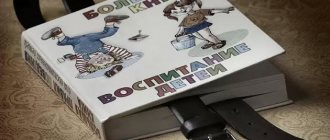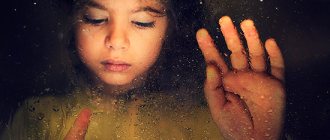In anxiety, we imagine everything that could happen: it’s as if short scary videos appear in our heads. These messages of danger are received by the amygdala, a part of the brain that is primitive compared to the prefrontal cortex. Having received the signal, it turns on the defense system: it transmits the signals further - and the body comes into a state as if it had been attacked by a grizzly bear. The defense system controlled by the amygdala is designed to get you out of any dangerous situation you find yourself in. But the amygdala cannot recognize the difference between real and imaginary danger.
The problem with modern anxiety is that there is nothing to fight. These are just our fears that something might happen. We think about it a lot and imagine vividly, in detail, how it will happen. And then physical symptoms appear: we blush, tense up, begin to tremble, or run to the toilet. When we feel this in the body, we think: “What a horror, what is happening to me?” And the poor amygdala says: “Yes, yes, we are in danger, what I was afraid of is happening!” This process can be truly dramatic, but many children and parents are not aware of it. Simply being aware of the processes that occur in the body will help reduce anxiety. This is the first thing I teach parents and children.
How anxiety is passed from parents to children
Concerned parents have a huge impact on children. In anxious families there is a lot of talk about danger, risk, bad things that can happen - they see the world as a dangerous place. Such a parent becomes a role model for the child; he conveys a constant desperate search for confidence and comfort. A child of anxious parents can, just like them, constantly seek reassurance, asking over and over again: “Mom, will you pick me up from kindergarten?” - or, if this is a teenager, send a lot of alarming SMS: “Mom, there’s something wrong with my stomach, maybe I’m sick?” If this behavior is repeated, parents should ask themselves, “Am I doing something that is feeding anxiety in my child?”
When we reassure a child from the outside over and over again, we do not give him the space to develop inner confidence. Often in anxious families, children do not trust themselves, their inner voice. This extends from childhood into adulthood: anxious children grow up to become anxious parents.
If your child asks a question over and over again, encourage him to look within for the answer: “Worrying seems to make you forgetful. We have already talked about this, please turn to your smart brain and get this information from there.” This is how we build inner confidence. Thanks to her, an adult can tell himself, if something goes wrong: “Okay, things are bad, but I can handle it.”
Another anxiety behavior in families is avoiding normal things to avoid dealing with the unpleasant feeling. If you don't like to ride roller coasters, that's okay. But what if you don't like talking to strangers? Or don't want to answer the teacher at school or show up at school at all? The child of such parents refuses activities in which he must act independently. He says: “I just don’t want to, it’s boring!” By constantly avoiding certain situations, we follow the lead of anxiety: in the short term we feel better, but in the long term we maintain patterns of behavior with anxiety. This is how a disorder is formed.
Content
- 1 Description of the technique
- 2 Theoretical foundations
- 3 Validation 3.1 Content validity
- 3.2 Construct validity
- 3.3 Age-differential validity
- 3.4 Criterion validity
- 5.1 Calculation of raw points
- 8.1 Method form
What anxiety relief techniques can you use?
The main thing to convey to anxious children is that it is normal to be nervous. Yes, there may be a problem in life that needs to be solved. Things happen that make you worry. You go to a new place, meet a group of unfamiliar children, a new nanny comes to you, your parents stay out late for the first time. Of course, you feel uncomfortable and insecure - that’s how they feel in this situation.
Next, you need to teach your child problem-solving skills. If you feel anxious, you need to try to understand what you are facing. There are only three options: it’s a danger (a fire in the house, and all the energy is needed to leave it), a problem that needs to be solved (a situation in which you need to immerse yourself and find a way out), or it’s just noise (“what if, what if, what if"), which is spinning in my head.
Understand what's troubling you
First, pay attention to the subject of concern. What exactly is worrying? There is no need to concentrate for a long time on what worries the child. Over time, the subject of concern - like the child's life - will inevitably change. Awareness of current worries is necessary in order to catch the moment when anxiety manifests itself and to understand how the process unfolds - how anxiety works. This experience can be easily transferred to all new situations.
“Bringing” anxiety to light
When anxiety manifests itself, you need to “catch” it and give it a name, thus creating distance between yourself and your anxiety. At this stage, it is important to turn anxiety into a joke: come up with a funny nickname, present it as a character, and say frightening thoughts in a funny voice. You can tell your child, “Well, let's look at your anxiety!” - take a sheet of paper and draw it together. Or: “Now I’ll get your alarm!” - and make a gesture as if you are taking it out of the child’s head with a stupid sound.
Of course, teenagers will roll their eyes at this: “God, are you serious?” Therefore, you need to speak to them in “adult” language: “I want you to learn to notice this pattern of thinking and distance yourself from it. When you can mentally step back and look at your thoughts and reactions, you will become much stronger.” Next, ask your teen to imagine that anxiety is a nasty person who keeps lecturing and lecturing, and you think: “Oh, damn it, please shut up. Well, how did you get it? This makes it very easy to grasp the concept of detachment from anxiety. And this turns out to be enough - then you just have fun.
One of my patients came up with the idea that anxiety was her grandmother (she was the most anxious person in the family). Her anxiety-grandmother was a small creature that sits on her shoulder. My patient took it with three fingers, shook it off and said: “Sorry, Mi-mi, but I have to live my life.”
My patient-parents also come up with such characters with names. I tell the kids, “Now notice when your mom starts to have Gladys anxiety and remind your mom that Gladys is not part of the family.” When a parent begins to convey to the child the message that “the world is a dangerous place,” I give the child the opportunity to see this and help the mother remember that her anxiety does not have to affect life. And this is a powerful shift for the family.
Make anxiety predictable
We have learned to externalize anxiety—to become aware of the moments when it begins to make its frightening statements. Now we have to make its appearance predictable. This does not mean that you should always expect anxiety. There are simply situations in which it will definitely arise, because this is completely normal for a person: the amygdala does its job.
The subjects of anxiety may be different: someone is afraid of snakes, someone is afraid of speaking in public, but the mechanism of occurrence is always the same. Because it is already familiar to us, when anxiety arises, we are able to step back and become aware of the thoughts that arise in the prefrontal cortex, how they “ignite” the amygdala and are transmitted throughout the body. We have exposed the anxiety and now we can say: “Of course you showed up. Because I'm going to a new school or taking my driving test." You enter an unfamiliar situation - and anxiety strives to bring you back to comfort. Now you are able not to be fooled by her statements, as always before, but to feel slightly bored and mentally respond: “Oh, hello, anxiety - just in time! Yes, yes, as always the same.” This is how we change our relationship with anxiety and learn to give it a different response.
Cards help me when working with children. I ask the child to write three favorite things that anxiety says to them: “This dog will bite you / Butterflies are dangerous / There are sharks in the pool.” And on the other side of the card we write “My answers to anxiety.” These should not be refutations of the subject of alarm like “There are no sharks in the pool.” These are responses to anxiety itself: “Anxiety, you are very predictable” or “Anxiety, you are stopping me from learning new things.” The kids love it, they keep the cards in their pencil cases and know they always have an answer to their anxiety. This skill helps you move through life: recognizing anxiety in new situations and responding to it.
Practice uncomfortable situations
The only way to learn how to confidently cope with anxiety is practice. If we indulge anxiety and do what it demands, the amygdala constantly receives confirmation that there is danger. We need to create the opposite experience—the experience of acting in situations where you are nervous, frustrated, or have made a mistake. To do this, we must allow the child to enter into new, uncomfortable situations.
First you just need to get closer to the object of concern. We try to approach a disturbing situation in such a way that the amygdala does not receive a message about the danger. Anxiety requires us to take what is happening as seriously as possible. We act differently (our goal is to reduce resistance): positively, with play and humor. With younger children we come up with stickers and give them small rewards that will stimulate them. We play role-playing games with the elders: first I act as the alarm, then they do. We train ourselves to respond to anxiety and thus create new experiences. Children act - and create a new path in their brains.
The goal is for the child to learn to feel comfortable in discomfort—to adapt to it. If we go to a new place, there is no need to say: “We are going to gymnastics, the teacher’s name is Lucy.” We should say: “We are going to gymnastics, I think your anxiety may show up, what will she tell you? What will you answer her? Tell". We must make it clear that anxiety in this situation is normal, and be there to support the child if he does not cope.
This process takes time. First you prepare for the situation, then you try to enter into it - and analyze after everything has succeeded. One of my little patients realized that her anxiety increased when she said goodbye to her mother in kindergarten. After that, she continued to cry, but said at the same time: “This is the moment of farewell, mommy!” This is the opposite of trying to get rid of anxiety. It's about learning: you simply learn to be aware of your feelings, manage yourself and cultivate resilience.
Interpretation
Calculation of raw points
Raw scores are calculated by simply mathematically summing the results of responses to all items belonging to each scale (on the answer form, the items are specially distributed in such a way that each column corresponds to one scale). Some points are interpreted in reverse meanings:
| Scale | Direct statements | Converse statements |
| General anxiety | 1, 11, 21, 31, 41, 51, 61, 71, 81, 91 | |
| Anxiety in relationships with peers | 2, 12, 22, 52, 72, 82 | 32, 42, 62, 92 |
| Anxiety due to the evaluation of others | 3, 13, 23, 33, 43, 53, 63, 83, 93 | 73 |
| Anxiety in relationships with teachers | 4, 24, 34, 44, 54, 64, 74, 84, 94 | 14 |
| Anxiety in relationships with parents | 25, 45, 75, 85, 95 | 5, 15, 35, 55, 65 |
| Anxiety associated with learning success | 6, 16, 26, 36, 46, 56, 76, 86, 96 | 66 |
| Anxiety arising in situations of self-expression | 7, 17, 27, 37, 47, 57, 67, 87, 97 | 77 |
| Anxiety arising in knowledge testing situations | 8, 18, 28, 38, 48, 68, 78, 88, 98 | 58 |
| Decreased mental activity associated with anxiety | 9, 29, 39, 49, 69, 79, 89, 99 | 19, 59 |
| Increased autonomic reactivity associated with anxiety | 10, 20, 30, 40, 50, 60, 70, 80, 90, 100 |
Since responses are made on a Yes/No basis, and each scale contains 10 points, the maximum value of raw scores for each scale is 10, the minimum is 0.
Calculation of standard points
For standardization purposes, raw scores are converted to standard z-scores using the formula:
where is the primary score on the test,
– average value for the normative group,
– standard deviation from the mean value for the normative group.
Final assessment of results
Each subsample was divided into four groups, with which the result is correlated during interpretation:
- subjects with low values of the indicator (from –2.5 to –1 z-scores),
- subjects with average values of the indicator (from –1 to +1 z-scores),
- subjects with high values of the indicator (from +1 to +2 z-scores),
- subjects with extremely high values of the indicator (from +2 to +3 z-scores).
Also, the assignment of a subject to a particular group can be made on the basis of comparison with the normative indicators of the corresponding sample.
Table of normative indicators
Practical significance
The main indication for the use of the multidimensional assessment questionnaire for children's anxiety is an individual analysis of the structure of manifestations of anxiety in children and adolescents of school age in connection with problems that arise in their home, during schooling, and in relationships with others (peers, teachers and parents). With the help of the questionnaire, a deeper understanding of the psychological causes of academic failure and a more adequate development of a plan for psychological assistance for schoolchildren is possible. Based on the results of individual testing, it is possible to predict and assess traumatic situations and identify “targets” for individual and family psychotherapy. The information obtained using the Multidimensional Assessment of Child Anxiety Questionnaire will also be useful to doctors and other health professionals dealing with problems associated with various neuropsychiatric and psychosomatic diseases.
Along with an individual analysis of the manifestations of anxiety in individual children and adolescents, the questionnaire can be used to assess the structural manifestations of anxiety in microsocial groups in school settings in order to prevent the development of conflict situations between students in certain classes among themselves and teachers, as well as to predict the success of school education.
Also, the scope of application of the questionnaire for multidimensional assessment of childhood anxiety is screening psychohygienic and psychoprophylactic studies of children and adolescents, including the use of modern information (computer) technologies to identify risk groups for school and mental maladjustment.
Undoubtedly, it is advisable to use it when assessing the dynamics of emotional disorders in children with neuropsychic and psychosomatic disorders in inpatient and outpatient practice, especially to clarify and meaningfully qualify tasks for conducting psychocorrectional measures with “difficult” and “problem” children.
Limitations in the use of the questionnaire include, first of all, the age of the subjects under 7 and over 18 years old, as well as a low degree of understanding of the meaning of the questions with a clear decrease in intelligence and the presence of pronounced attitudes towards simulation or dissimulation in the subject.











